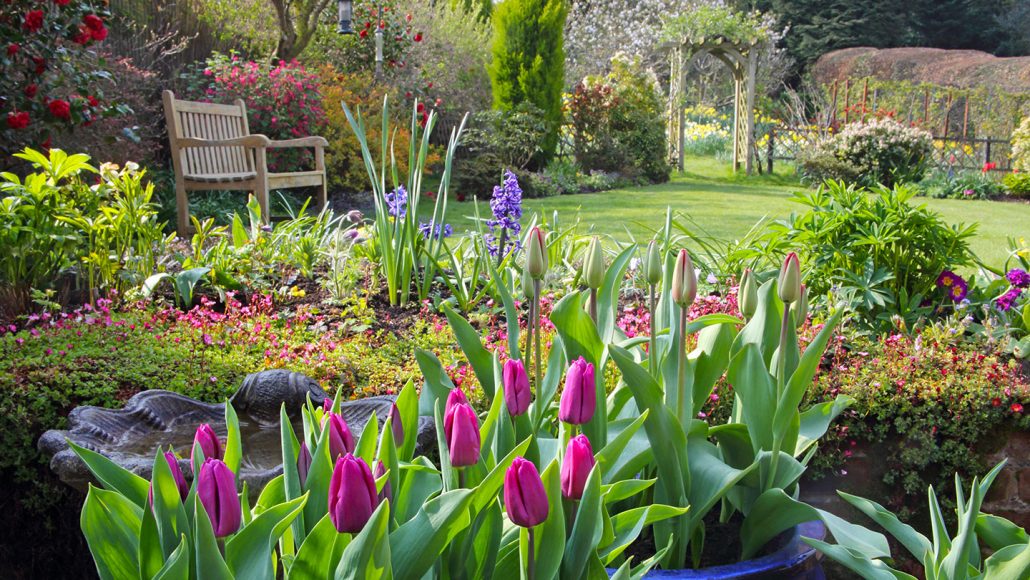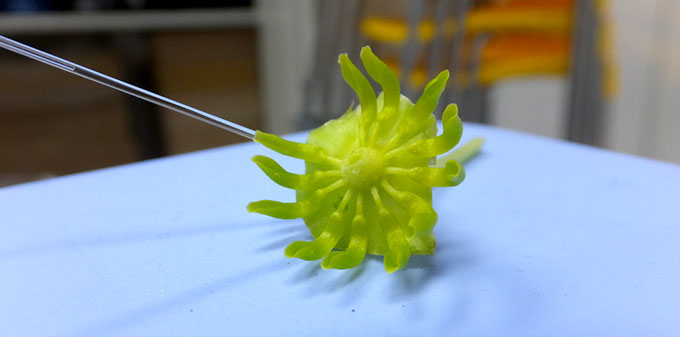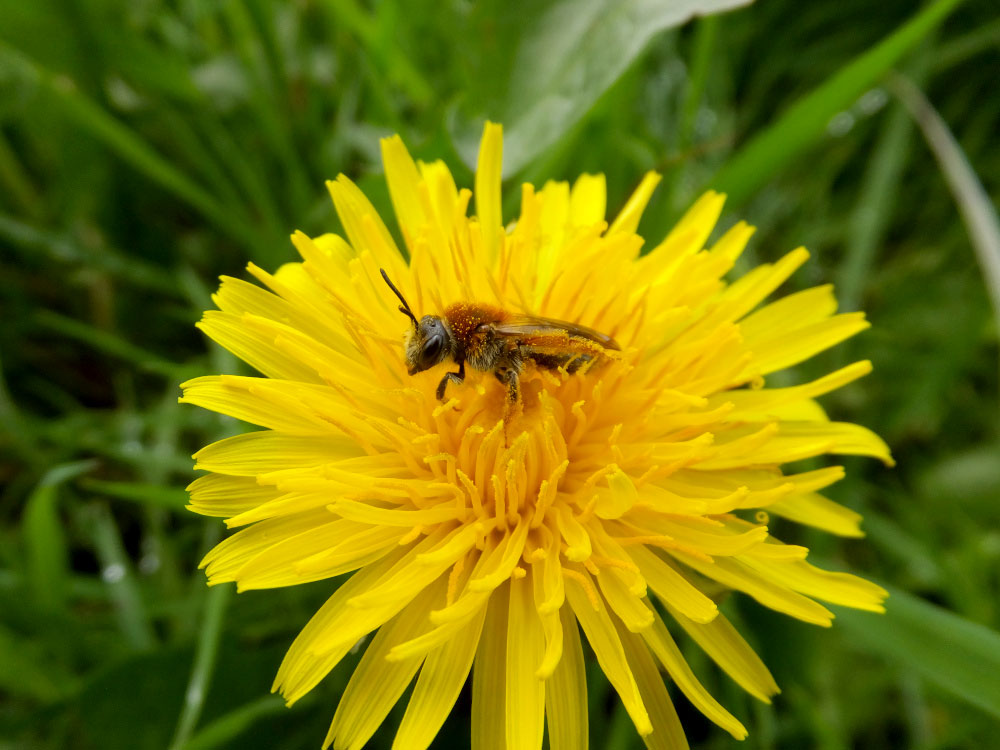Urban gardens create a buffet for bees
Diversity of flowers is a critical source of nectar for pollinators

Gardens containing a variety of flowers with different shapes, colors and scents are an important source of nectar for a variety of pollinators.
Rosemary Calvert/Stone/Getty Images
The buzz of bees in summer is quieter than it used to be. Other pollinators are also struggling to survive. These include butterflies, flies and moths. There are many reasons such species are in decline. But loss of food sources is a key piece of the puzzle. However, urban gardens can provide critical nectar supplies for pollinators. That’s the finding of a new study.
Many pollinator studies focus on insects. Nicholas Tew was more interested in the flowers they visit. Tew is an ecologist at the University of Bristol in England. He was curious how much nectar was available in different types of habitats. He also wanted to know how cities compared to other landscapes. City flowers haven’t been studied as closely as those found on farms and in nature reserves. But Tew thought they might be just as important in feeding pollinators.
“Urban areas cover a relatively small fraction of all land,” he says. But “they can be particularly important because most of [the British] countryside is taken over by intensive farming.”
Tew and a team of researchers looked at previously collected data. Those came from 12 sites across the United Kingdom. The team focused on three landscape types: urban areas, farms and nature reserves. They tallied a total of 536 types of flowering plants. Some were found only on farms or in nature reserves. Others appeared only in urban areas. Still others occurred in two or all three landscapes.
Cities had a much higher diversity of flowering plants than surrounding areas, they found. Cities hosted many non-native species, too, such as begonias and butterfly bush. People often plant these species for their beauty. Farm sites and nature reserves had less plant diversity. But they had more native species, such as bellflower and heather.
Plant diversity is important because different pollinators prefer different types of flowers, Tew says. They may prefer yellow blooms over purple ones, for example. Or broad flowers over those that are cup-shaped. “Flowers have different shapes, sizes, colors and scents, and pollinators vary in their preferences,” Tew notes. The more variety of flowering plants in one area, the more likely that pollinators can find their favorite food.
But not all plants produce the same amount pollinator food — nectar. So Tew’s team tallied how much nectar each type of flower made. Some measurements came from previous studies. The researchers also made some new measurements. They covered single flowers or tight clusters of flowers with a net for 24 hours. This stopped pollinators from feeding. They then collected the nectar and measured how much sugar it had.

Nectar hotspots
The team found little difference between farms, urban areas and nature reserves in how much nectar they offered. What did matter was how many flowers were blooming at the time. Woodland areas with few flowers produced little nectar. A heath covered in flowers, on the other hand, had lots.
Tew was particularly interested in cities. “Urban areas can be hotspots of flowering plant diversity,” he says. They may be important sources of food for pollinators. That’s especially true for bees that fly long distances.
The researchers looked more closely at urban sites. They examined nine types of habitats within four cities. These included nature reserves, cemeteries, vegetable gardens, flower gardens and other green spaces. The team also looked at parks, sidewalks and surrounding areas. They even included parking lots and industrial areas. These last places had little plant life. But they did have hotspots of flowers sprouting in unexpected places.
Flower gardens, the team found, provide a whopping 85 percent of the nectar in urban areas. “Urban gardens are a major source of nectar in towns and cities,” Tew says. What’s more, they contain the highest diversity of types of flowers.
The team published its findings February 21 online in Journal of Ecology.

“This excellent study shows that small urban gardens and farms are abundant sources of nectar for pollinators,” says Xingwen Loy. He is a community ecologist at Emory University in Atlanta, Ga. Loy was not involved with the study. “We should continue to create such habitats to support urban pollinators,” he says.
“The nature preserves examined in this study are relatively small patches of natural greenery located inside of U.K. cities,” he notes. “This is not a comparison of Yosemite National Park and downtown Atlanta.” But gardens, small farms and nature preserves are important sources of food for pollinators.
Urban gardens are also likely a major U.S. source of nectar, says Tew. But there may be differences that affect how beneficial they are. That’s because urban gardens look different in the United States and the United Kingdom. “Suburban gardens in the U.S.A. may be neater and tidier with ‘perfect’ lawns and a heavy use of pesticide and herbicides,” Tew says. But those lawns are disastrous for pollinators, he points out. They provide them little food. And the chemicals applied to keep them perfect can kill off many useful insects.
Creating a pollinator-friendly garden isn’t that hard, though. It’s best to include a variety of species, Tew says. There should be different flower shapes, colors and sizes. This will provide food for all types of pollinators. And a garden with a variety of plants should also attract natural predators of garden pests. So you can skip the pesticides. Says Tew, “Gardening for pollinators is a fantastic way to help support their conservation at a time when they really need our help.”







